Two Early Paintings with OMA
Here, Zoe Zenghelis, painter and founding member of OMA, recalls the making of two paintings now in the Drawing Matter collection. The first, pictured below, is an aerial view of the unbuilt Hotel Therma, and the second is a version of OMA’s entry to the Parc de la Villette competition. For more about Zenghelis’s work during the early days of OMA, listen to her in conversation with Hamed Khosravi and Edwin Heathcote, organised by the Architecture Foundation.
Hotel Therma, Lesbos, 1985
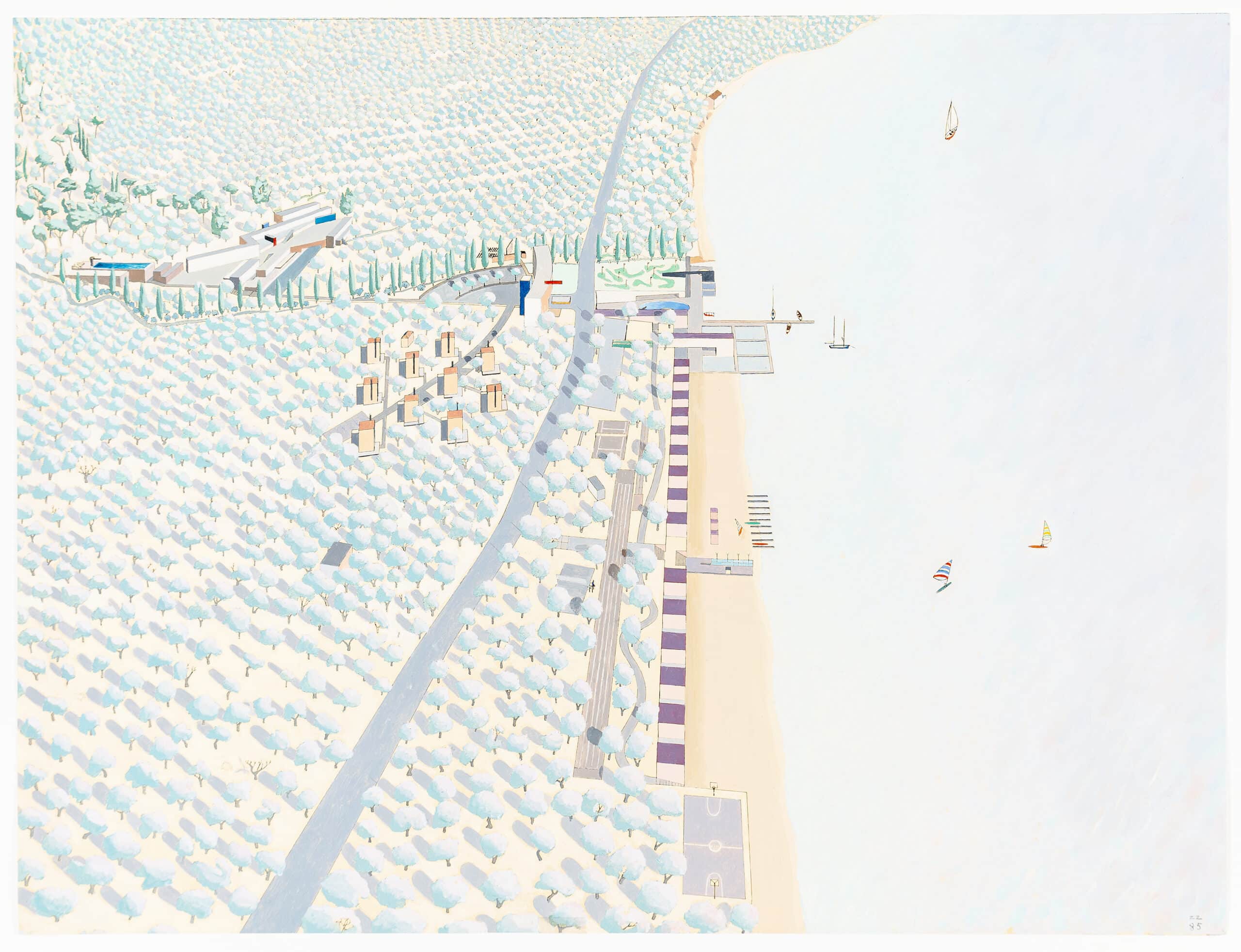
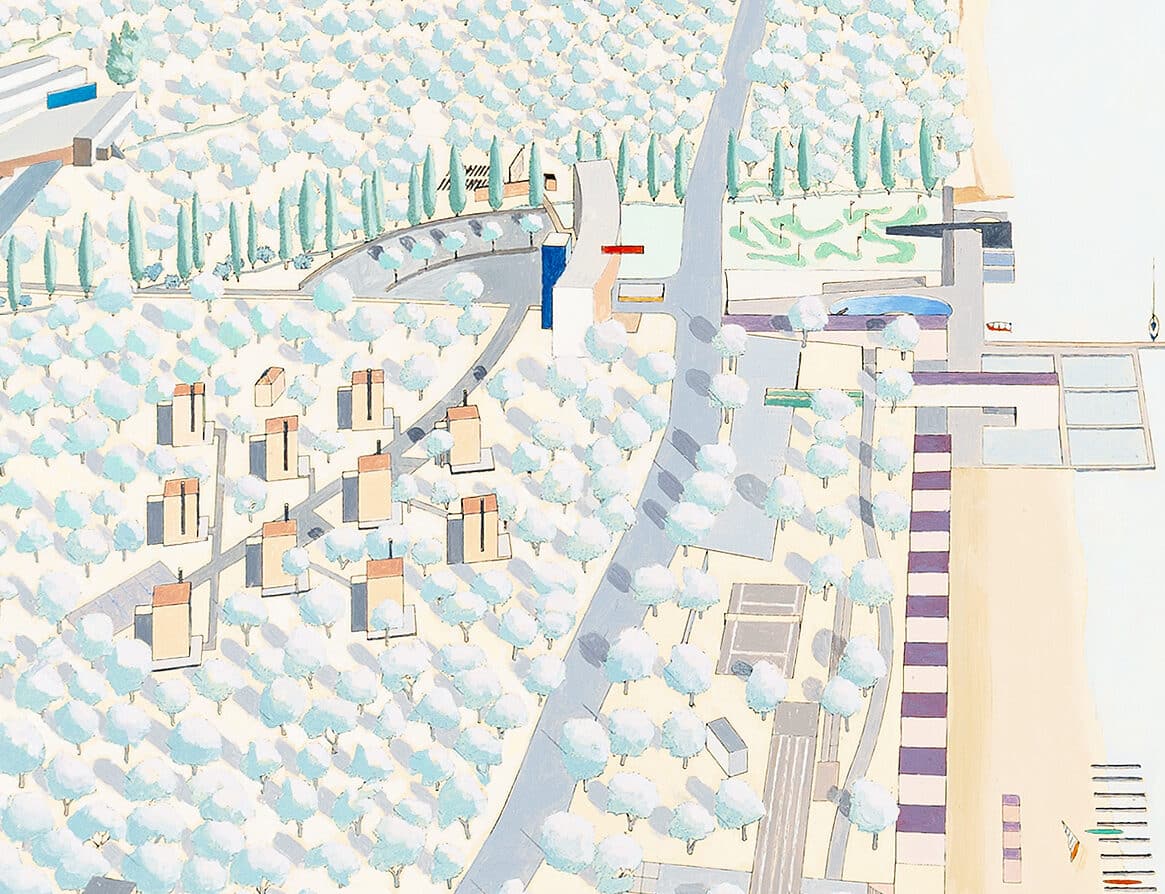
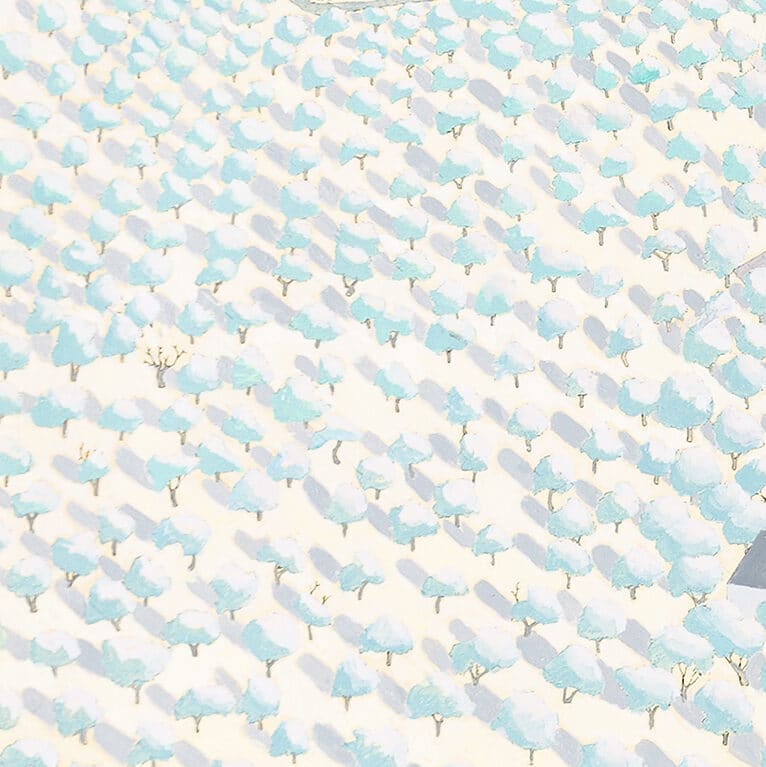
The idea to do two atmospheric, emotional paintings for the Therma Hotel project came to Elia and me when we were spending time in Lesbos completing the design of the hotel and taking a holiday on Elia’s family’s estate, which is on the side of a hill of pine forest that reaches down to the sea, opposite Turkey. The plot of the hotel was not very far away, in the Geras bay, where thousands of olive trees reached almost to the sea. It is hot and the heat creates a mist-like reduced visibility that subdues the colours. On one side, the Therma Hotel faces the ochre-golden expanse of sand and the sea and the pale mauve-pink where the sea touches the sand. At the back, the hotel looks onto a grove of olive trees, the leaves are silvery-grey with a touch of green. The trunks, with their typical tortured shapes (some of them a hundred years old), can sometimes be seen through the dense crowns of the trees. We decided there and then to have a day and a night image of the hotel, giving priority to the mood and atmosphere of the site.
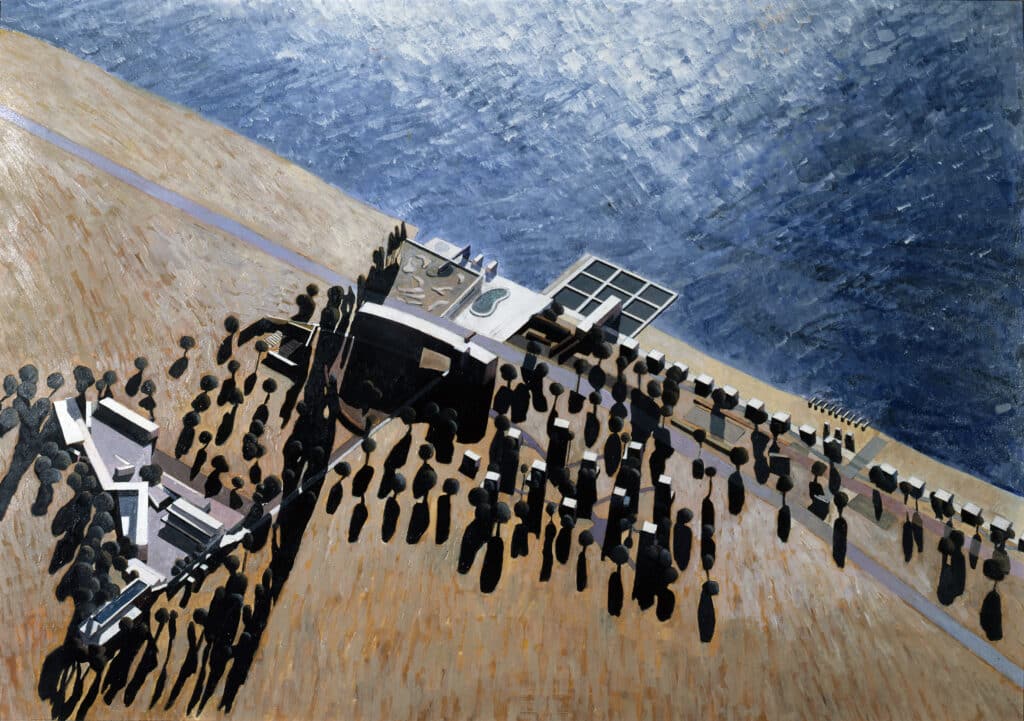
I used oil paints, a more sensitive and timid material, for gentle transparency, and I painted the shadows to complement the composition. My shadows rarely follow the rules of reality, mostly they are there to play a positive role in the relationships of the shapes and space. I always saw architecture as a stage to painting, a passage from the representational to the abstract. The evening scene, on the contrary, is a dramatic painting of strong dark trees with even stronger shadows, with only the top of the buildings catching the last light of the evening. The sea is darkish blue with the light of a possible moon illuminating part of it. The sand is darker with a bit of brown and a touch of orange.

Parc de la Villette Competition, 1982
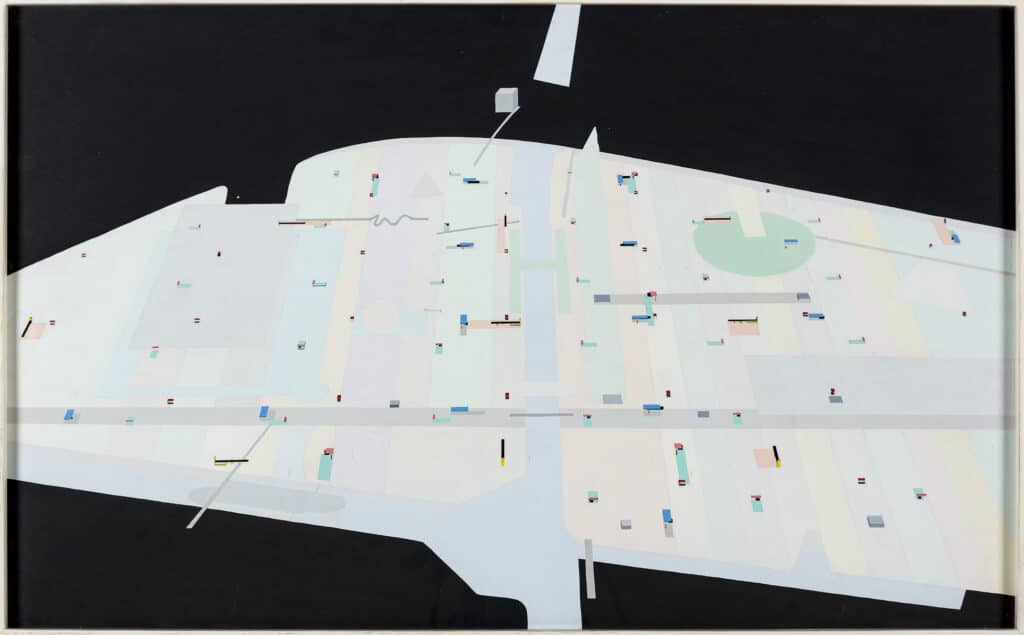
The La Villette brief had an overcharged programme that suited Rem’s theory of density and congestion. The organisers wanted public spaces with museums, athletic facilities, areas for entertainment, science and discovery areas, shopping and, of course, gardens, trees and flowers. In all, 40 different activities were arranged horizontally in bands and zones. The kiosks of different uses were placed wherever they were needed. I wanted to use these confetti-like kiosks as small containers of colour, spread on a carpet of lightly coloured strips. The idea was that I would create an abstract painting to produce a carpet of oneiric, harmonic sensations. I liked the congestion of the park’s design but felt the need to reduce the multiple layers of energy and propositions. My hope was that my composition would use some of the elements of the design, but only as a basis for a study on colour, superimposed with small shapes of stronger more dynamic colour, an act that, for me, reconciled the contradiction of the factual and the abstraction.
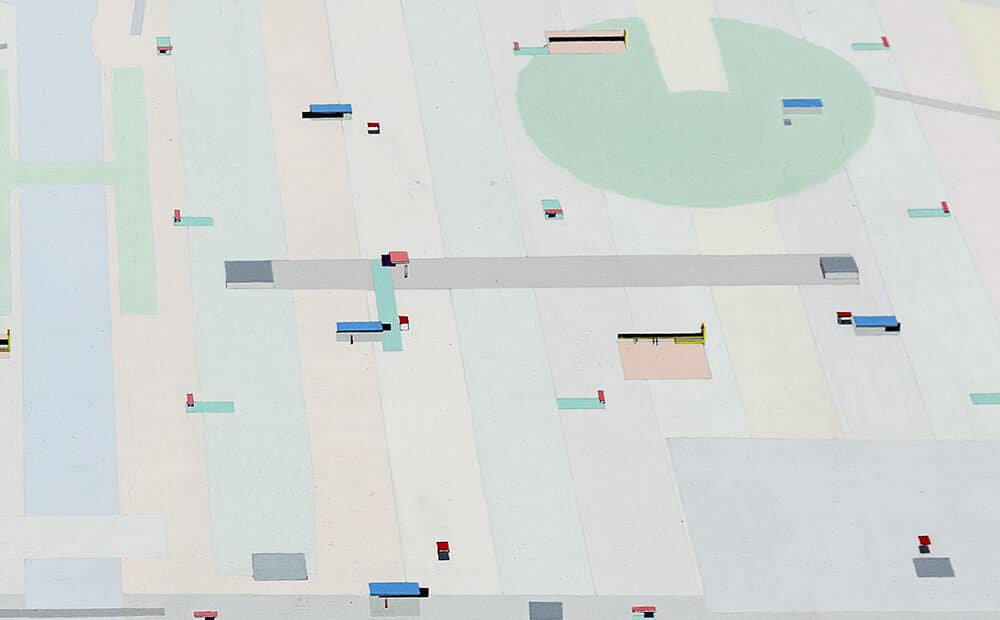
There were times, before or after the final drawings or paintings of a competition, that I felt the need to give my own free interpretation of what inspired me most from the whole project; to produce a painting that, on one hand, ignored unwanted items, and on the other accentuated and gave priority to the relationships of the items of inspiration.
The idea for the La Villette painting came when all of us were exhausted after working without stopping at Rem and Maddy’s flat – I remember hearing the birds starting to sing in the morning twice in 48 hours! That is the point at which you don’t remember what you have been painting as the painting is taken from under your nose, packed and off to the post office, at the last minute before 12 at night, for Paris. My decision to start an abstract painting came after the end of the competition and the trip we took to Paris. We were convinced that we would certainly win the prize, but had to face the disappointing result that Bernard Tschumi had won instead!
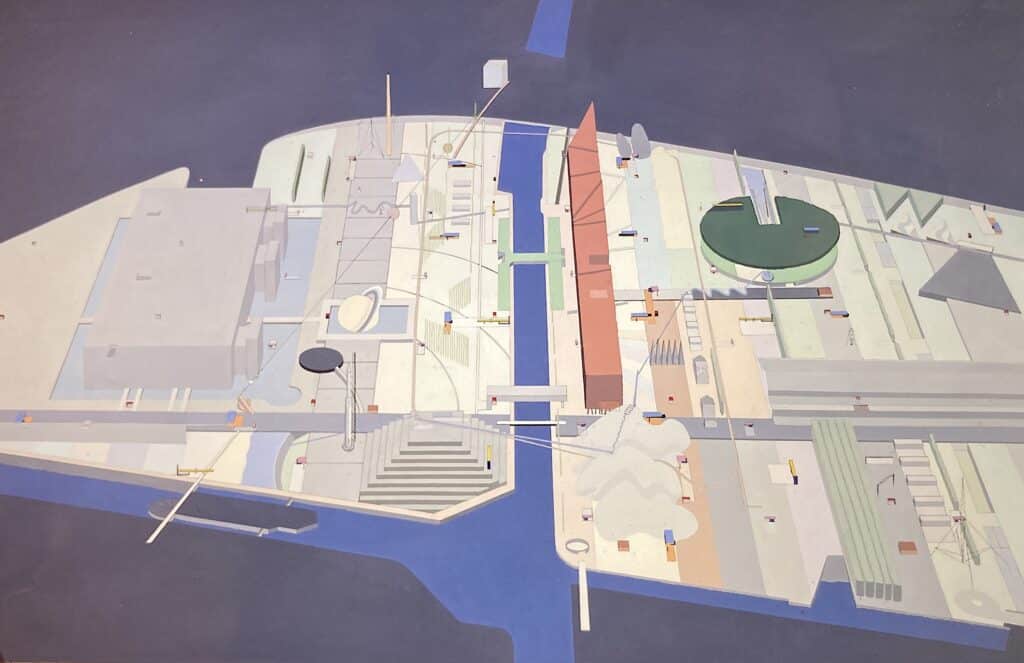
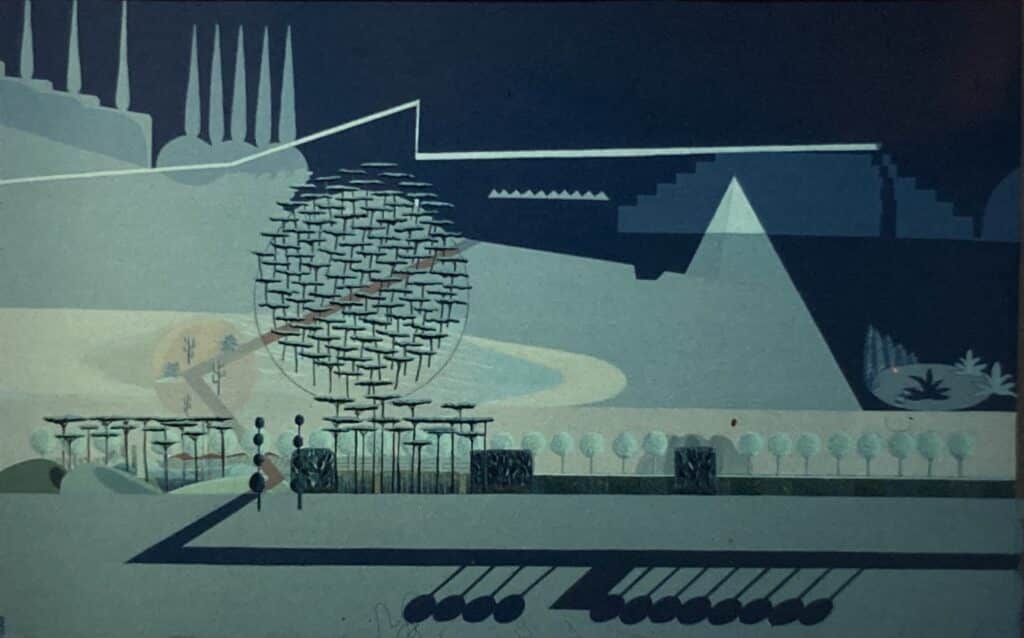
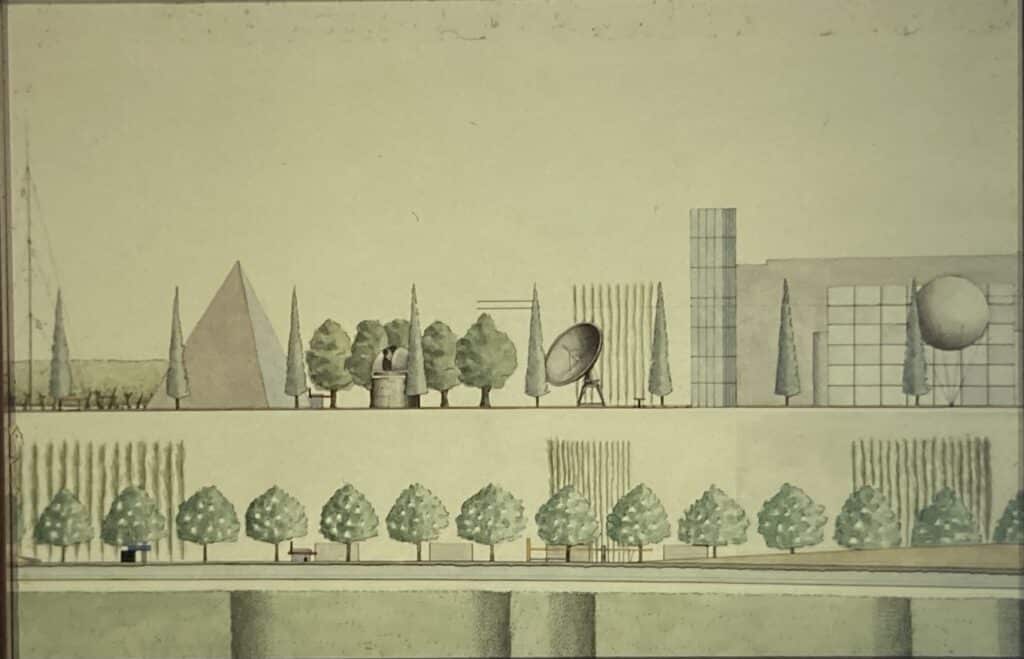

– Desley Luscombe